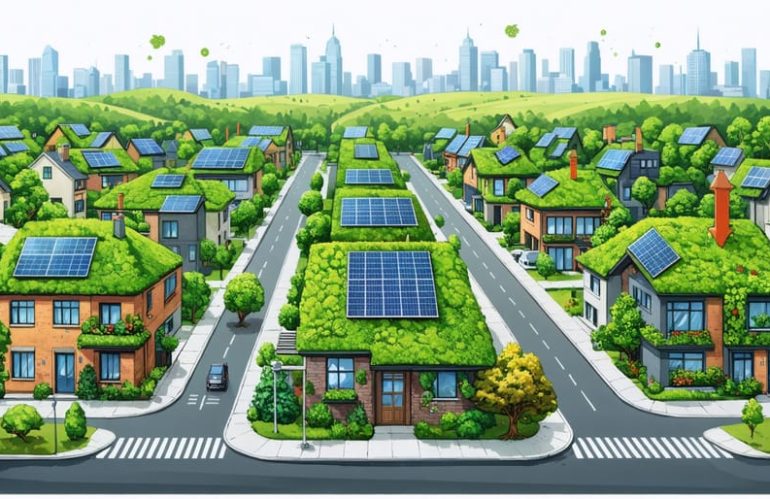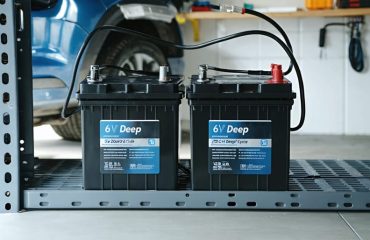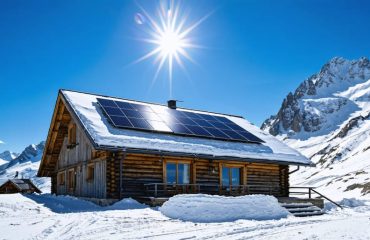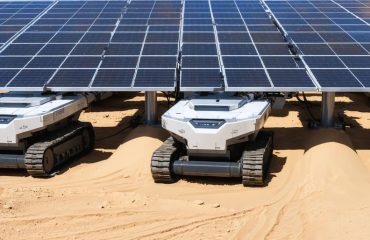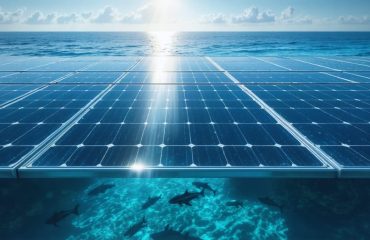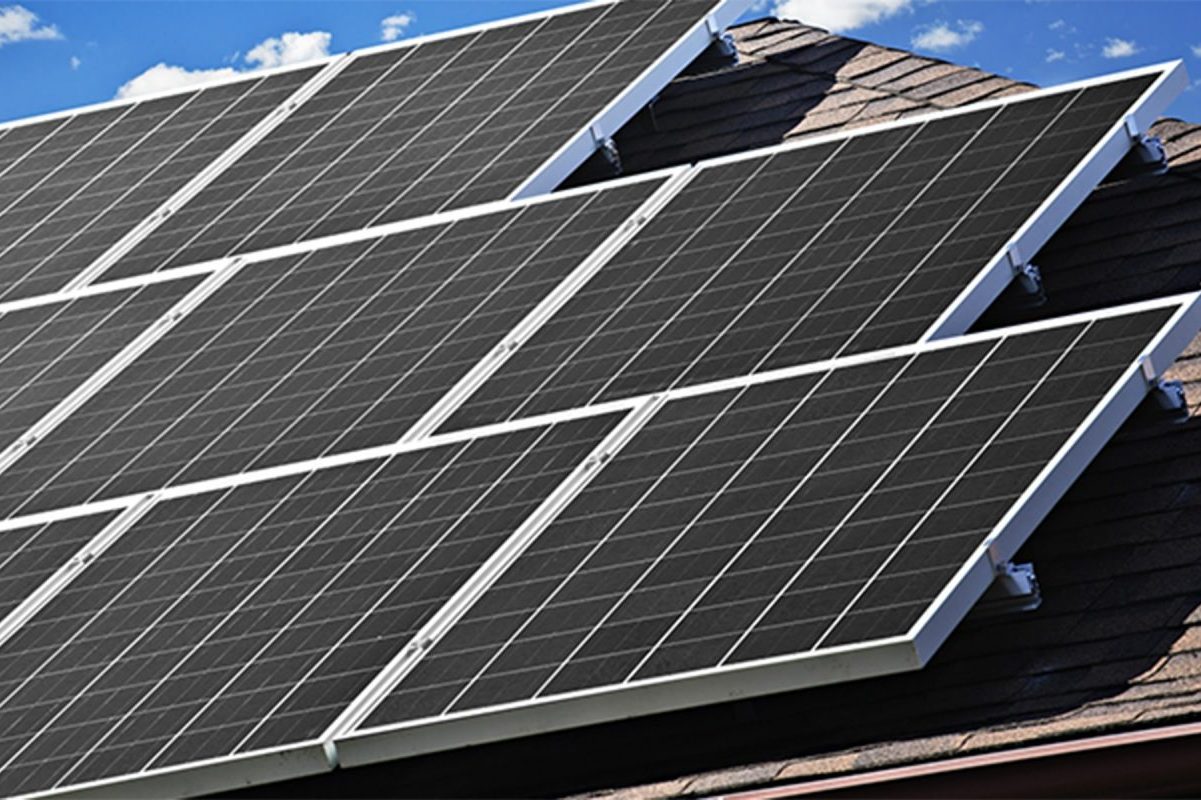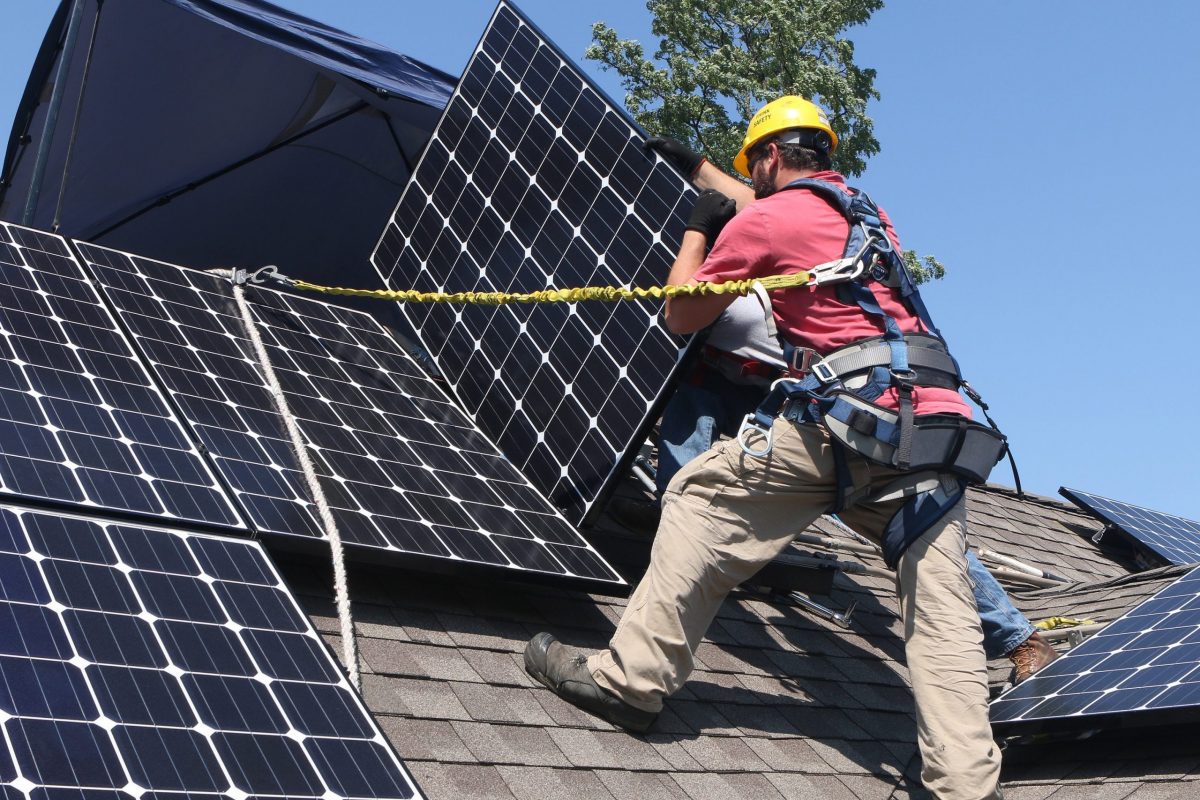Transform your urban neighborhood into a cooler, more sustainable environment by implementing proven heat island solutions today. Installing reflective “cool roofs” reduces surface temperatures by up to 50°F while cutting cooling costs by 20%. Creating green spaces through strategic tree planting provides natural shade and can lower surrounding air temperatures by 9°F, especially crucial during extreme heat conditions. Converting dark pavement to light-colored, permeable surfaces reflects up to 30% more sunlight and allows natural ground cooling through moisture evaporation.
Smart urban design choices not only combat rising temperatures but deliver immediate financial benefits through reduced energy bills and increased property values. Modern solutions like solar panels and green roofs pay for themselves within 5-7 years while providing lasting protection against urban heat. By combining these approaches with community-wide initiatives, homeowners can create measurable temperature reductions while building more resilient, energy-efficient neighborhoods for the future.
How Solar Panels Combat Urban Heat Islands
The Cooling Effect of Solar Panels
Solar panels do more than just generate clean electricity – they also help cool our cities by absorbing heat that would otherwise contribute to urban warming. When sunlight hits a solar panel, about 20% of the energy is converted into electricity, while most of the remaining heat is absorbed by the panels rather than being reflected back into the surrounding environment.
Research shows that solar panels can reduce the temperature of a roof by up to 5°F during peak summer hours. This cooling effect extends beyond individual buildings, as large-scale solar installations can help lower ambient temperatures across entire neighborhoods. The panels essentially act as a protective shield, preventing heat from reaching building surfaces and reducing the amount of warmth radiating back into the urban environment.
This dual benefit makes solar panels an especially attractive solution for urban heat island mitigation. Not only do they help keep buildings cooler and reduce air conditioning needs, but they also generate clean energy that further reduces the heat output from traditional power generation methods. For homeowners, this means lower energy bills and a more comfortable living environment, while contributing to a cooler, more sustainable community.
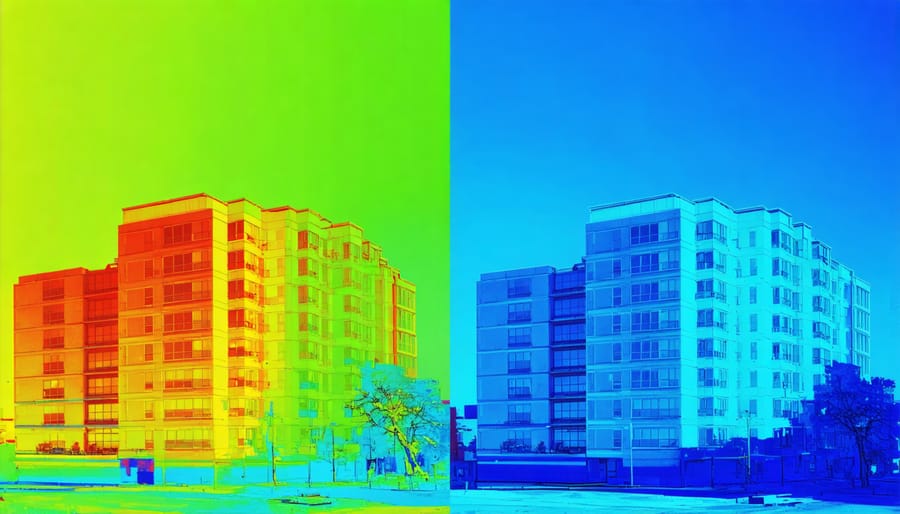
Reduced Power Plant Heat Emissions
Traditional power plants contribute significantly to urban heat by releasing waste heat during electricity generation. By switching to solar energy, communities can reduce their reliance on these heat-producing facilities, helping to cool our cities naturally.
When homeowners install solar panels, they’re not just generating clean electricity – they’re actively participating in reducing the heat burden on their neighborhoods. Solar panels convert sunlight directly into electricity without producing excess heat, unlike conventional power plants that release substantial amounts of thermal energy into the environment.
This reduction in power plant operations, especially during peak summer days when electricity demand is highest, creates a positive cooling cycle. Less reliance on traditional power plants means less waste heat released into the urban environment, which in turn reduces the need for air conditioning, leading to even lower power plant usage.
The benefits extend beyond temperature control. As more households adopt solar power, the decreased demand on power plants helps reduce greenhouse gas emissions and air pollution, creating cleaner, more livable urban spaces for everyone. This collective effort in transitioning to solar energy plays a crucial role in addressing the urban heat island effect while providing sustainable power for our communities.
Smart Solar Design for Maximum Cooling
Optimal Panel Placement
Strategic panel placement is crucial for maximizing both cooling benefits and energy generation. South-facing installations typically offer the best solar production, but for urban heat reduction, consider spreading panels across multiple roof aspects. This approach creates more comprehensive shade coverage while still maintaining efficient energy generation.
For optimal cooling, position panels 4-6 inches above your roof surface. This gap creates a ventilation channel that enhances cooling effects and helps panels perform better even in harsh environmental conditions. The airflow beneath the panels can reduce roof temperatures by up to 15 degrees Fahrenheit.
Consider your local climate patterns when planning panel placement. In regions with intense afternoon sun, installing panels on west-facing surfaces can provide crucial shade during peak heat hours. For multi-story buildings, vertical installations on south and west-facing walls can create additional shade while utilizing otherwise unused space.
Avoid common placement mistakes like cramming panels too closely together. Proper spacing ensures adequate airflow and prevents heat buildup. Work with a certified installer to analyze your roof’s specific characteristics, including slope, orientation, and existing shade patterns. They can help design a layout that balances cooling benefits with optimal energy production, ensuring you get the most value from your solar investment.
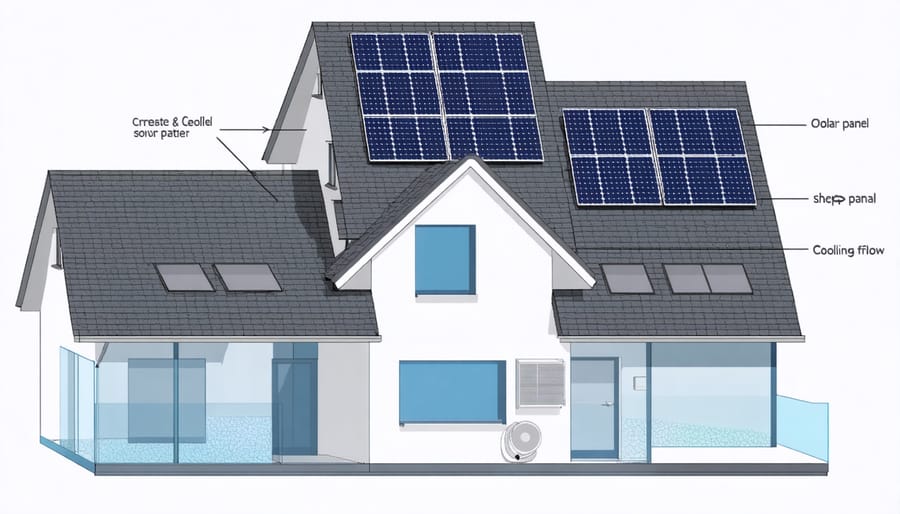
Rooftop Heat Management
Solar installations can do more than just generate clean energy – they can actively help cool your roof and home when properly designed. By implementing smart heat management strategies, your solar setup can provide a double benefit of power generation and temperature reduction.
The key lies in creating an air gap between your solar panels and the roof surface. This gap allows for natural airflow, creating a chimney effect that draws hot air up and away from your roof. When panels are mounted 4-6 inches above the roof surface, they provide shade while allowing heat to dissipate effectively.
Light-colored or reflective mounting hardware can further enhance cooling effects by reflecting sunlight rather than absorbing it. Modern solar panel designs also incorporate heat-resistant materials and anti-reflective coatings that help manage temperature build-up.
Consider installing a solar array with microinverters or power optimizers, as these components can be positioned to promote better airflow compared to traditional string inverters. Some innovative mounting systems even include built-in ventilation channels to maximize cooling efficiency.
The cooling effect of well-designed solar installations can reduce roof temperatures by 5-10 degrees Fahrenheit, leading to lower indoor temperatures and reduced air conditioning costs. This cooling benefit adds to the already substantial energy savings from solar power generation.
Additional Benefits for Homeowners
Lower Cooling Costs
Solar panels do more than just generate clean electricity – they’re also excellent tools for reducing your cooling costs during hot summer months. When installed on your roof, solar panels act as a protective shield, absorbing and deflecting sunlight that would otherwise heat up your home’s interior.
This shading effect is particularly impressive, as studies show that buildings with rooftop solar installations can reduce their cooling needs by up to 20%. The panels create an air gap between themselves and your roof, allowing heat to dissipate rather than transfer into your home. This natural cooling effect means your air conditioning system doesn’t have to work as hard to maintain comfortable indoor temperatures.
The financial benefits are substantial. Homeowners typically see a 5-10% reduction in their air conditioning costs after installing solar panels. For a household spending $200 monthly on cooling during summer, this could mean savings of $10-20 per month – on top of the electricity savings from solar power generation.
These cooling benefits are most noticeable during peak summer hours when the sun is directly overhead. The panels absorb the strongest solar radiation, precisely when your home would otherwise be gaining the most heat. This timing advantage means you’re getting maximum cooling benefits when you need them most.
What’s particularly appealing is that this cooling effect requires no additional equipment or maintenance – it’s simply a natural benefit of having solar panels on your roof. Combined with the electricity generation savings, these cooling benefits make solar panels an even more attractive investment for urban homeowners looking to beat the heat while reducing their energy bills.

Property Value Benefits
Properties that incorporate urban heat island solutions often see significant increases in their market value and appeal. Homes with green features, such as reflective roofs, shade trees, and energy-efficient modifications, typically command premium prices in urban markets. Research shows that properties with mature trees can increase home values by 3-15%, while energy-efficient features can boost property values by up to 10%.
The financial benefits extend beyond just selling price. Properties with heat-reducing features often spend less time on the market, as environmentally conscious buyers actively seek homes with sustainable elements. These improvements also translate to lower insurance premiums in many cases, as features like cool roofs and proper landscaping can reduce the risk of heat-related damage.
Energy-efficient homes are increasingly attractive to potential buyers, especially in urban areas where utility costs tend to be higher. Properties equipped with heat-reducing solutions typically see reduced cooling costs, making them more appealing to cost-conscious buyers. This advantage becomes particularly significant in competitive real estate markets where energy efficiency can be a key differentiator.
Moreover, as cities implement stricter environmental regulations and building codes, properties already equipped with heat island mitigation features are better positioned for long-term value appreciation. These homes often require fewer updates to meet new standards, protecting their value and marketability over time. Forward-thinking homeowners who invest in these solutions now are essentially future-proofing their properties while enjoying immediate benefits in comfort and energy savings.
Getting Started with Solar Cooling
Assessment and Planning
Before implementing urban heat island solutions, it’s essential to evaluate your property’s specific needs and potential impact. Start by conducting a simple heat assessment of your home and surroundings. Note areas where heat tends to accumulate, such as dark-colored surfaces or spots with limited airflow.
Consider your property’s exposure to sunlight throughout the day and evaluate existing shade from trees or structures. This information is crucial for determining optimal solar panel positioning and identifying areas where additional greenery might be beneficial.
Review your current energy bills, focusing on summer cooling costs. This baseline will help you track improvements and calculate potential savings from heat-reducing measures. Also, assess your roof’s condition and color, as these factors significantly impact heat absorption.
Make a list of existing heat-contributing elements like dark pavement, lack of vegetation, or heat-retaining materials. Consider your budget and prioritize solutions that offer the best return on investment, such as reflective roofing or strategic tree planting.
Don’t forget to check local regulations and homeowner association guidelines regarding modifications to your property. Many communities offer incentives for implementing heat-reducing measures, which can help offset initial costs. Consider consulting local sustainability experts who can provide personalized recommendations based on your specific situation and climate zone.
Available Incentives
Installing solar panels in urban areas comes with numerous financial incentives that can significantly reduce your initial investment. The federal solar tax credit, also known as the Investment Tax Credit (ITC), allows you to deduct 30% of your solar installation costs from your federal taxes through 2032. This means on a typical $20,000 system, you could save $6,000 through tax benefits alone.
Many states offer additional tax incentives and rebates. For example, some states provide property tax exemptions for the added home value from solar installations, while others offer sales tax exemptions on solar equipment purchases. Cities often layer on local incentives, such as expedited permits or direct cash rebates, especially in urban areas working to combat heat island effects.
Net metering programs, available in most states, allow you to earn credits on your utility bill for excess solar power you generate. Some utilities also offer performance-based incentives, paying you for each kilowatt-hour your system produces.
Many local governments have created “solarize” campaigns, where neighborhoods band together for group purchasing power, often securing 15-20% discounts on installation costs. Some cities even offer low-interest financing options or PACE (Property Assessed Clean Energy) programs, allowing you to finance your solar installation through your property taxes.
Remember to check with local solar installers and energy offices, as incentives can change frequently and vary by location.
Addressing the urban heat island effect isn’t just about creating a more comfortable city environment – it’s about building a sustainable future for our communities. By implementing solutions like green roofs, reflective surfaces, and urban forests, we can significantly reduce local temperatures while creating beautiful, livable spaces. These changes bring multiple benefits: lower energy bills, improved air quality, enhanced property values, and stronger community connections. Every small step counts, whether it’s planting a tree, installing cool roofing, or supporting local green initiatives. Together, we can transform our urban areas into cooler, healthier spaces while fighting climate change. The time to act is now – start with one change in your neighborhood and be part of the solution to urban heating.

